SparkFun was founded on playing with technology. I was always learning the most when I was pushing the outer edges of what I knew and what I was comfortable with. That's how SparkFun really started: I was teaching myself PIC programming in 2002 when I set my WARP-13A programmer down on some bits of wire, there was a spark, and $150 worth of gear smoked. It was a fabulous learning experience, and an event that set in motion the founding of an electronics company.
As SparkFun has grown over the past 14 years, my job as founder has been dedicated to running the business. Days were filled with the important stuff like planning, strategy, vision and professional development of the leadership team. However, I was constantly distracted by the new, shiny technology of the day. There are tons of new platforms and sensors to play with! And whenever I should have been working on business things, I found myself trolling through datasheets and searching out new suppliers and manufacturers to work with. So a few months ago I made two changes:
Step 1 - Hire a CEO to run the company. Glenn has been doing a smashing job of concentrating on SparkFun. He's only been running SparkFun for nine months but it’s felt like the time has zipped by. Under his purview and with his hand on the rudder SparkFun is doing quite well. And I’m ecstatic because…
Step 2 - Get back to engineering.
In February we started the SparkX lab to serve as a focused, experimental product development project. Anyone at SparkFun could apply, and I picked two people to work with me for three months. No email, no meetings, just three people working closely on whatever catches our interest. Sometimes it’s a new quad PIR sensor that we’ve never seen the likes of before. Sometimes we feel like cracking a safe (broadcasting it on YouTube was one of the scariest and dumbest things I’ve done in awhile!). Sometimes we want to experiment with new materials like the encapsulant on the Robotic Finger Sensor. We’ve got the freedom to jump on anything, and we’re having a hoot doing it.
TAZ 6, vacuum oven, vacuum chamber
We move as fast as we can. I think the record for the first SparkX group was nine days from idea to live product. Not bad! We’ve got a few machines to help us including a Taz 6, an OtherMill Pro, a mini vacuum chamber, an oven (for curing silicone encapsulant) and the standard iron/hot-air rework tools.
Othermill Pro with various tools of the trade
The OtherMill allows us to quickly proto a PCB and hand solder a rough proto together. It also allows us to explore molding and alternative testing jigs. It's a really handy little machine that has seen a ton of use.
Rough proto of the MLX90393 Breakout
Being able to proto a PCB is a huge advantage and allows us to wrap our heads around a given technology or sensor before we start laying out a production PCB. We can also start on example sketches and libraries using the proto while the parts are inbound.
Tape and reels of common parts. Wheels are the key!
We’ve set up the lab so that it designs, procures and manufactures everything on its own. We don’t get the benefit of the larger SparkFun machines (like pick-and-place and optically-aligned solder paste stencils), but it does mean we can operate on our own schedule. It’s fantastic to be able to focus in on one project from start to finish.
Qwiic Mux Shield for Arduino getting populated by hand
We’re ordering parts, stencils, PCBs -- the whole shebang. We hand stencil the boards (just like in the basement many years ago) and place the parts. Boards take a trip through the SparkFun reflow oven, then are inspected, tested, bagged, tagged and moved over to the SparkFun storefront for shipment.
The Spectral Sensor from AMS was pretty amazing to work with
Just like the bad old days we're even taking our own photos, so our apologies if they are subpar compared to SparkFun product photos. Check out the SparkX category to see the current wares.
Qwiic connectors on the MLX90393 product
As an example of how this type of innovation environment leads to great things, let's look at the Qwiic system's origins. After testing a few hundred I2C-based devices, we got really tired of sorting out which wire was SDA or SCL and whether we had the correct voltages. At the same time, we were using the 1mm JST connector on the Robotic Finger Sensor (also an I2C device). It was a moment less Eureka and more head-smacking - why haven’t we done this in the past!? The Qwiic system was born.
You’ll find these four pin connectors on most of the boards SparkX produces from now on, and you’ll start to see them on I2C-enabled SparkFun boards. There are design tradeoffs (no INT pin, but cheaper cables and connectors), but we’ve found the ability to plug in and quickly get a device talking to be a great advantage.
The goal of SparkX is to play and experiment with new things. For the first class of SparkX folks, three months included new materials, processes, suppliers, technologies, working with the local authorities, new music, video production, even the way we check in every day. Whatever comes of SparkX (good, bad or ugly) gets transplanted to SparkFun to make it even better -- design review, tech support, documentation, etc. Sometimes it’s a good idea and SparkFun decides to carry it as a normal product (holy smokes the Radiation Sensor was a good find), and sometimes it’s an idea SparkFun should steer clear of (reflowing coin cells makes them explode!). It’s like I get to start SparkFun over and over again, and I’m thrilled!
Last three bags from a box of 1,000
This may look like just a couple poly bags in front of an empty box, but it’s waaay more significant to us. That’s what’s left over from the box of 1,000. Over the past 12 weeks we’ve designed, built and packaged nearly a thousand products. For SparkFun as a whole, this is a drop in the bucket. For me, it’s an incredibly wonderful return to hacking, building and making things.
If you’re into weird, new technologies and products checkout the SparkX products and blog. It's not for the faint of heart, but it is a sandbox for creative souls. The next SparkX group will be starting soon. If you’ve got an idea for a product or arena we should play in, please let us know.
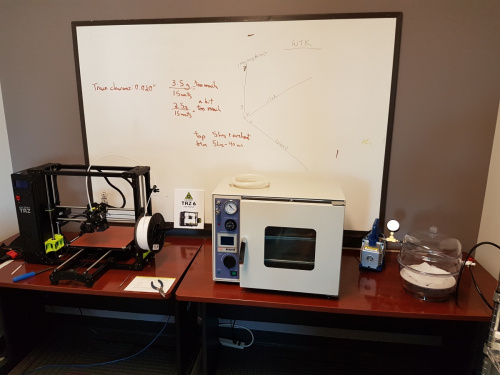
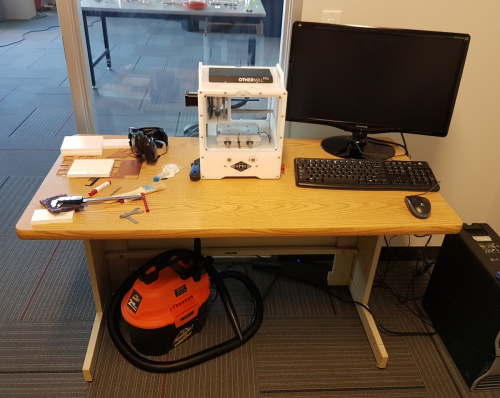
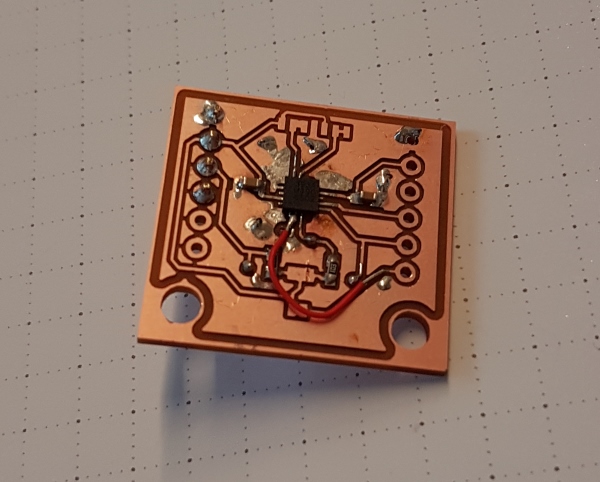

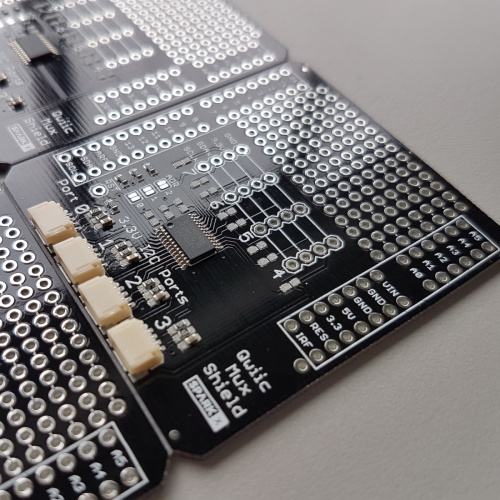
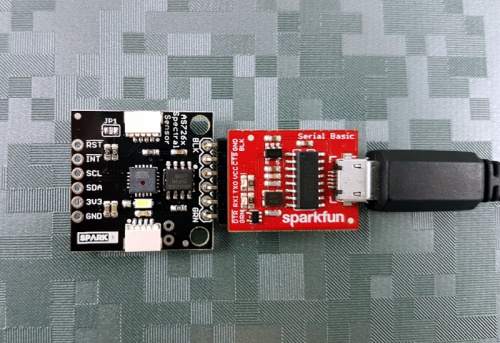
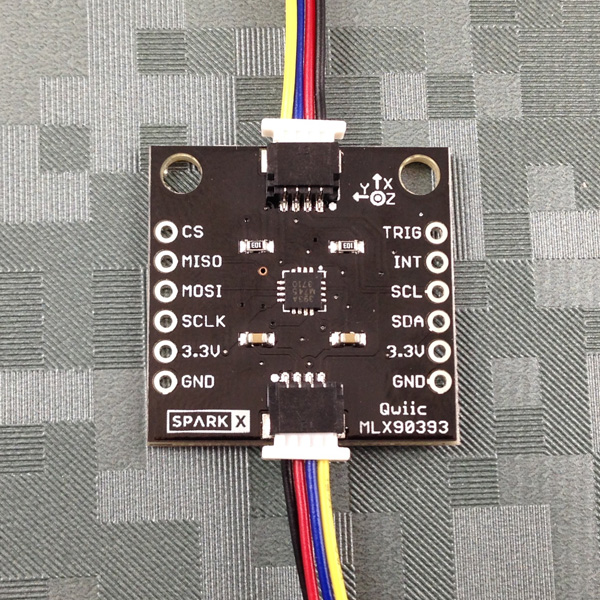
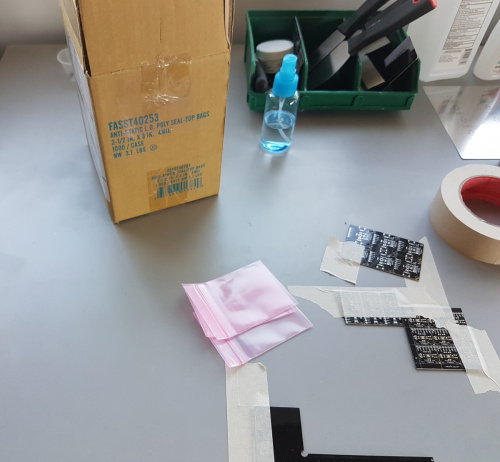






So, how open are you as a company for allowing/(licensing?) others (hobbyists, competitors, etc.) to use the Qwiic name to declare their projects/products compatible?
Have you actively advocated others (even competitors) to use the Qwiic system (i.e. connector and pinout) similar to how the "Ardiuino" pinout has become a defacto standard for certain form factors?
Great questions! We are completely open to allowing anyone to use the name as long as the device uses the same connector and pinout (to avoid market confusion).
We haven't yet advocated other users or competitors. Mostly we're taking the quiet approach. If people like it we hope they'll put (gentle) pressure on companies to include the connector.
The images of Spark X lab are amazing, I liked all.
SparkX projects need grid fins to be legit.
Probably seem very off topic - how did you mill that border with the OtherMill??? I can't figure out how to mill features like that with files from EagleCAD
Heh, the Warp-13A was what finally drove me away from PIC and toward ARM/AVR. I bought it because Microchip refused to document their protocol, but it offered a documented protocol, which meant I could use it with open source software. Then new PIC chips came out, and (presumably because it ran out of memory for two protocols), to get support for them, it lost the ability to use the documented protocol. At that point, I gave away all my PIC chips and gear and transitioned to AVR.
I too left the PIC field many years ago and dove in to the deep end of the Atmel/ARM pool. It's a bit murky now that Microchip owns Atmel but the Warp-13A still brings back good memories.